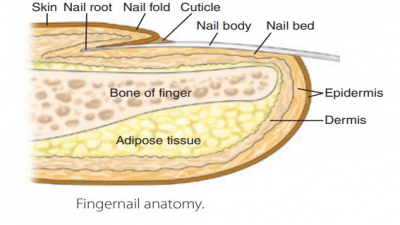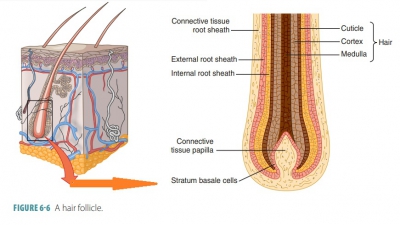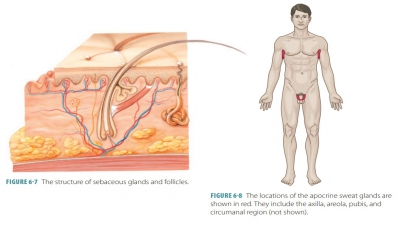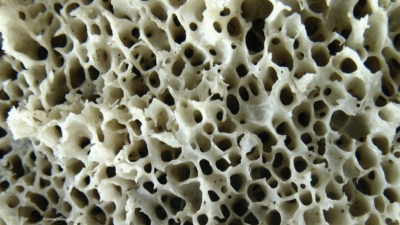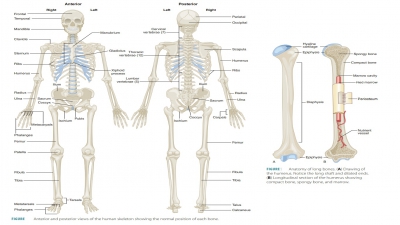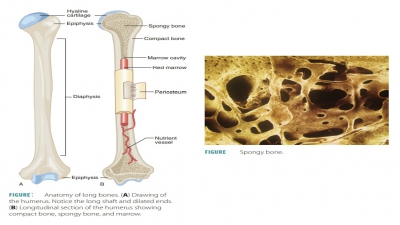Response of the Integument to Injuries and Wounds
| Home | | Anatomy and Physiology | | Anatomy and Physiology Health Education (APHE) |Chapter: Anatomy and Physiology for Health Professionals: Support and Movement: Integumentary System
The integument responds to injuries and wounds with inflammation, which causes redness, increased warmth, and painful swelling.
Response of
the Integument to Injuries and Wounds
The integument responds to
injuries and wounds with inflammation, which causes redness, increased warmth,
and painful swelling. The blood vessels of the wounded area dilate and allow
fluids to leak into the damaged tissues. This provides more nutrients and
oxygen to the tissues, aiding in healing. Shallow breaks in the skin cause
epithelial cells to divide more rapidly, with the new cells filling the break.
A cut that extends into the
dermis or subcutane-ous layers breaks blood vessels. The escaping blood then
forms a clot in the wound, eventually forming a scab as it dries. The scab protects the underlying tissues. Cells
called fibroblasts move to the injury
to form new collagenous fibers that bind the edges of the wound together. Large
skin breaks may require suturing or other methods of closing them more
com-pletely, which actually helps to speed up the action of the fibroblasts in
healing.
Wound healing proceeds as blood
vessels extend into the area below the scab, with phagocytic cells removing
dead cells and debris. As tissue is replaced, the scab eventually falls off.
Extensive wounds may cause the newly formed tissue to appear on the skin
surface as a scar. Large open wounds
may develop small round masses called granulations,
which consist of new blood vessel branches and clusters of fibroblasts. Once
the fibroblasts eventually move away, the resultant scar is mostly composed of
collagenous fibers.
If a wound is large or occurs in
an area where the skin is thin, epithelial cells cannot cover the surface until
dermal repairs are already under way. Circulation to the area is enhanced so
that blood clotting, fibroblasts, and an extensive capillary network can
combine to combat the injury. (Together, these components are known as granulation tissue.) Repairs do not
restore the dermis to its original
condition, and collagen fibers dominate with relatively few new blood vessels. Scar tissue is relatively inflexible
and noncellular. Thickened, raised scar tissue is referred to as a keloid, featuring a shiny and smooth
surface. Keloids are harmless but unsightly.

